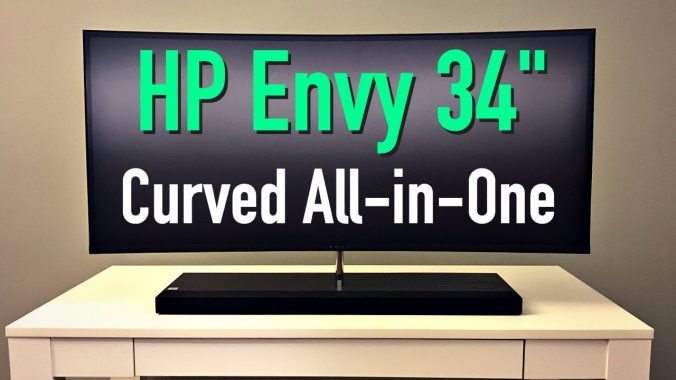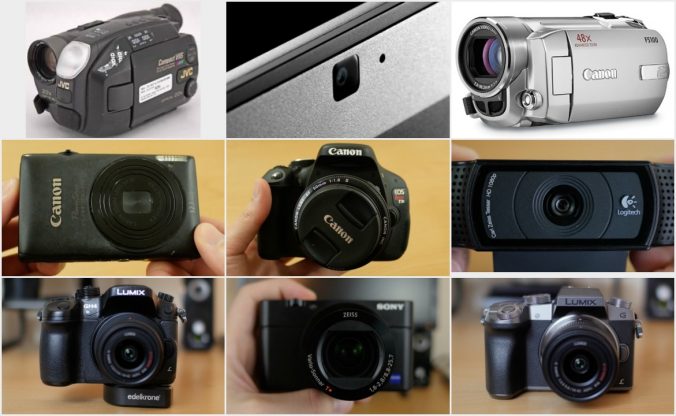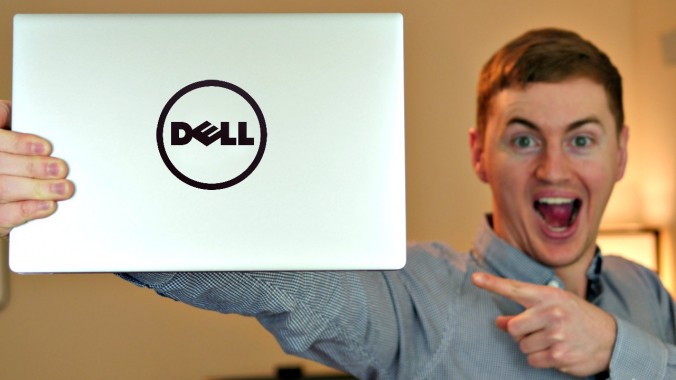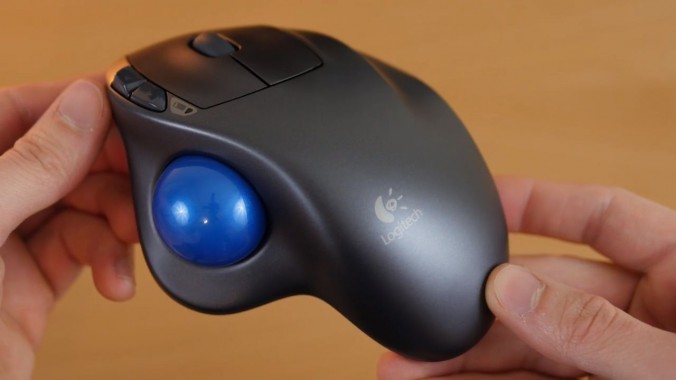One of my most anticipated reviews of 2017 so far: This the HP Envy 34″ Curved All-in-One (Amazon)
Thanks to HP for sponsoring this video and allowing me to review this.
If you’re watching this then you’re either generally intrigued by this being the world’s widest curved all-in-one and you want to see it up close and personal, or you’re actually in the market for an all-in-one desktop. So I will say if you’re looking for the best alternative to an iMac, this may be your answer. The model I have was released in early 2017, and it’s currently $1899 on Amazon which I will link to in the description below.
The first thing you’ll probably notice is the huge 34″ curved display. It’s an ultra-wide Quad-HD LED-backlit micro-edge display with a screen resolution of 3440×1440 and let me tell you, this is a cinema lover’s dream. Watching movies and videos, especially ones that are shot in 21:9, is an immersive experience. The slight curve to the monitor along with the thin bezels, the anti-glare matte finish and just how wide the display is really makes you feel like you’re a part of whatever it is you’re watching. I’m not a gamer by any means, but playing games that don’t require an extremely powerful PC is a blast on this 34″ screen. On the other hand, I do edit a lot of videos and that’s where the HP Envy Curved all-on-one truly shines. The amount of screen space I have when editing videos is so convenient. It’s a Technicolor Certified Display so the colors are vibrant and bright but still true to life. Since this is a larger display, it does not have as many pixels per inch as the Retina iMac, for example, so you are sacrificing pixel density for the bigger screen, but there’s no doubt that the 34″ curved display is one of the best features about this computer. If you’re a multi-tasker like me who always has at least one YouTube video on while working in Evernote and doing other things, you’ll love how much space this display gives you. Just make sure your desk will be able to fit it. That’s important because this thing is big.
When I first saw the HP Envy Curved All-in-One, the design really stood out to me. It’s impressive how elegant yet simple they made this. The display is connected to the base by a sturdy aluminum stand which allows you to tilt the display forward and backwards but be aware that you cannot swivel it from left to right or raise its elevation. A nice touch is the 720p HD webcam that’s hidden by default. You can pop it out by pressing down on it, and then you can press down on it again to keep it hidden if you are taking part in private matters. But I am a little disappointed that that’s not a 1080p full HD webcam because that just would have made more sense with such a big display, but on the other hand it does have an infrared camera that’s great for signing onto Windows using facial recognition, something that I wish MacOS had.
Now, the base is where all the computing parts live as well as the sound bar. It’s packing some nice specs too: A Quad-core 7th Generation Kabylake Core i7 processor with 16GB of DDR4 RAM, a dedicated AMD Radeon RX 460 with 4GB of memory, and one of my favorite features: a 256GB Solid state drive alongside a 1TB hard drive. So with these high specs you’re definitely getting fast performance along with ample storage space. It also has built-in WiFi and Bluetooth and comes with Windows 10 pre-installed. Now the first thing I do recommend you do if you get this is to update all the drivers along with the BIOS because updating the drivers will help reduce the fan noise when the computer is hard at work. With the old drivers the fans seem to make quite a bit of noise during intensive tasks like gaming and rendering HD videos, but updating to the latest drivers should help with that. But from the fast bootup to loading apps very quickly and managing multiple browser tabs with ease, the performance has been very snappy.
On the back of the base there are four USB 3.0 ports, one HDMI out, one HDMI in, a display mode switch, an Ethernet port, power in, and a security slot. On the right side there is a headphones jack, a memory card reader, and a Thunderbolt 3 port. HP also put in a Qi wireless charging pad on the base so if you have a compatible smartphone unlike me you can place it there to charge wirelessly.
Other than the design and the display, my other favorite feature is the built-in sound bar made by Bang & Olufsen who are known for their high quality audio products. This soundbar is made up of quad front-facing speakers along with two passive radiators mounted upwards at a 45-degree angle so if you position yourself right in the middle you’ll get a brilliant sound experience. The speakers sound rich and full but most of all they get super loud. Like really loud. And a very convenient bonus is the circular touch-dial on that base that you can use to quickly adjust the volume, which actually works really well and it’s my preferred way to turn the volume up or down.
My biggest pet peeve, and you can take that literally, biggest pet peeve is the hefty power adapter that powers everything. On one hand I love the fact that with an all-in-one there is only one cable coming out of the back. However, this thing is pretty massive and it’s not easily hidden so keep that in mind.
The HP Envy Curved All-in-One does come with its own wireless keyboard and wireless mouse. The mouse is powered by the included AA batteries and despite the thin plastic top, it feels pretty good and decently solid when using it. The keyboard is rechargeable and can be charged using the included USB cable. It’s a condensed laptop-style keyboard so if you want to game you’ll be better off getting a separate full size keyboard, but for most it does the job well.
So if you’re looking for a well-designed Windows alternative to the iMac or you’re just looking for a fast elegant all-in-one desktop for watching movies, listening to music, playing mid-tier games, or doing any type of productive work, the HP Envy Curved All-in-One is something to definitely consider. The link will be in the description below if you want to check it out. As always, give this video a thumbs up if enjoyed it and subscribe if you want more tech videos like this in the future. Thank you for watching. My name is Andy, and I will see you in the next one.




